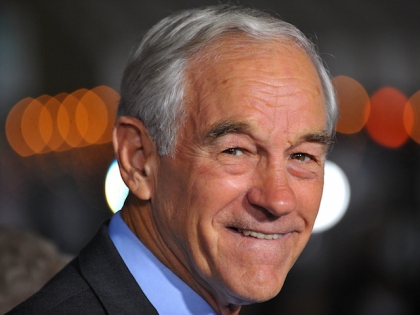Ron Paul is the presumptive frontrunner of the Iowa caucus, but this comes with its share of caveats, oftentimes lost in the news cycle.
First, the implications of a Paul victory are muted in a state where, at most, only 125,000 people will show up to vote out of a total eligible voter pool of 1.28 million people. It’s difficult to draw any clear implications about a national election in which 125,000 people cast ballots in a nation of 300 million.
Iowans are correct when they say organization matters, but sometimes the most organized people can oftentimes have the most radical message or simply the most voter identification. In 1988, Kansan Bob Dole and the Reverend Pat Robertson beat Vice President George H. W. Bush. In 1992, native Iowan Tom Harkin bested Bill Clinton, but lost the nomination. In 2008, Mike Huckabee placed first, while John McCain, who won the nomination, placed fourth. It takes a lot of organizing to turn out the vote and with at least seven candidates. Even now two-thirds of likely voters have yet to decide how they will vote. This is why you should expect to see more of these last minute endorsements and calls for candidates to drop out, lest one voting bloc be split.
Second, the Iowa caucuses do not allow absentee voting meaning that many voters who show up in the general election won’t have a say this time around. This list could include, as the New York Times has noted, “the infirm, soldiers on active duty, restaurant employees on the dinner shift, medical personnel who cannot leave their patients, parents who do not have babysitting and many others who work in retail, at gasoline stations and in other jobs that require evening duty.” That’s a lot of people who don’t get a say.
Third, the polls may overstate the participation of independents and Democrats in the Republican race. This was the criticism of the recent PPP poll that showed Ron Paul leading in Iowa. Neil Stevens, writing over at the blog Unlikely Voter, has a good analysis of that poll. He draws from the Iowa caucus of 2008 to explain why the caucus in 2012 won’t go for Paul.
In 2008 the caucuses, being closed of course, included 86% self-identified Republicans, 13% self-identified Independents who presumably registered Republican to caucus, 1% Democrats, 1% “Other.” PPP’s poll drops the Republican proportion to 75%, raises Independents to 19%, and raises Democrats to 5%. Guess who’s helped by both of those shifts, which are far outside the Margin of Error and so predict genuine, large shifts in the partisan makeup of the closed Iowa caucuses. That’s right: Ron Paul, who wins 40% of Democrats, 34% of Independents, but only 19% of Republicans according to the poll.
Moreover, even if we grant that Paul is in the lead with the PPP poll, it’s a very narrow one. The margin of error is four and so, by many accounts, this race is a three-way tie between Gingrich, Paul, and Romney. This shouldn’t surprise us. PPP is, after all, a Democrat-aligned polling firm.
Iowa, like New Hampshire, is becoming less and less Republican in its political orientation. It is, in fact, the 22nd least conservative state, meaning that more than half the states are more conservative. Iowans voted roughly two-to-one in the Democratic primary over the Republican primary in 2008. In final analysis, it looks like we have a not very representative poll in a not very representative state of a not very representative candidate in the Republican party.

COMMENTS
Please let us know if you're having issues with commenting.